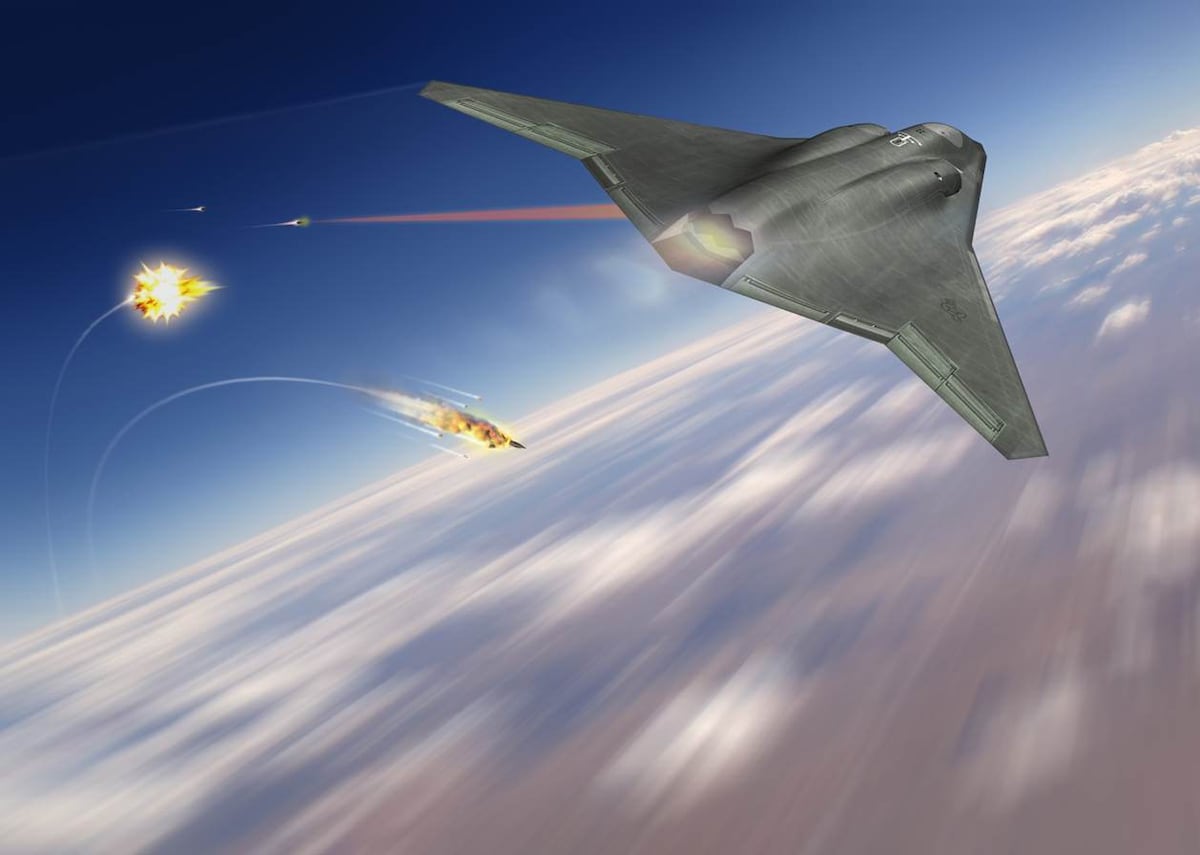The Air Force has decided to let the incoming Trump administration make its own decision on the path forward for its Next Generation Air Dominance fighter.
This summer, the Air Force paused its effort to develop and build a sixth-generation fighter amid concerns about its potential costs and began rethinking what it will need for a future war.
The review sparked by that decision includes reconsidering what the Air Force needs to maintain air superiority in a war against a major adversary such as China and redesigning NGAD to lower its costs — perhaps to lower than those of an F-35. The decision on how to proceed with NGAD was originally expected by the end of December.
On Thursday, however, the service announced outgoing Air Force Secretary Frank Kendall will not decide how to proceed with NGAD. Instead, the Department of the Air Force will continue its analysis and keep options open for the next administration.
The Air Force also said it is extending its current contracts with firms to mature NGAD’s technology and reduce risk, to keep industry teams intact and allow systems and designs to further progress. The service declined to provide more details on those contracts, including their value, how long they will be extended and who they are to. Lockheed Martin and Boeing are believed to be the leading contenders to build NGAD, although Northrop Grumman may reconsider its decision to bow out of the program depending on how the Air Force’s strategy shifts.
The service is also asking industry to update its schedule and milestone proposals to account for these delays.
The Air Force’s highly classified NGAD program aims to replace the fifth-generation F-22 Raptor fleet sometime in the 2030s. The service envisions the crewed NGAD fighter as the core of a “family of systems” that would also include autonomous drone wingmen known as collaborative combat aircraft. It would also have a cutting-edge adaptive engine that could switch to the most efficient configuration, as well as advanced sensors, weaponry and data connectivity technology.
The Air Force originally planned to award a contract for NGAD in 2024, but that effort was likewise put on hold.
But after rumors spread earlier this year that NGAD was in budgetary trouble, Kendall said in an interview with Defense News that the program needed a redesign to bring its costs under control.
In that June interview, Kendall said the original price projections for NGAD were running about three times the price of an F-35, which cost between $82 million and $109 million apiece depending on the model. At that price point, Kendall said, the Air Force would only be able to buy a small number of NGAD fighters.
“The family of systems concept of Next Generation Air Dominance is alive and well,” Kendall said at the time. “I can tell you that we are looking at the NGAD platform design concept to see if it’s the right concept or not. … We’re looking at whether we can do something that’s less expensive and do some trade-offs there.”
At the Defense News Conference in September, Vice Chief of Staff Gen. Jim Slife said the Air Force is also rethinking how it will achieve air superiority in a highly contested environment, and noted that may not be the same thing as figuring out how to build a sixth-generation fighter platform.
The Air Force also wanted the potential NGAD redesign to better incorporate recent technology advancements such as collaborative combat aircraft.
But it remains uncertain what President-elect Donald Trump’s victory will mean for the military’s approach to air superiority. Elon Musk and Vivek Ramaswamy, who Trump named to head a Department of Government Efficiency advisory panel, have each expressed skepticism over the value of crewed fighters in a future war.
Musk said in a series of tweets in November that “manned fighter jets are obsolete in the age of drones” and called those who build crewed fighters like the F-35 “idiots.”
Ramaswamy also said at the Aspen Security Forum in Washington on Wednesday that the U.S. should be investing more in drones and hypersonic missiles than “new kinds of fighter jets or whatever, that aren’t the highest” return on investment.
The Air Force told Defense News it has enough money to keep funding technology maturation and risk reduction for NGAD, and that the effort to build CCAs will continue uninterrupted.
Stephen Losey is the air warfare reporter for Defense News. He previously covered leadership and personnel issues at Air Force Times, and the Pentagon, special operations and air warfare at Military.com. He has traveled to the Middle East to cover U.S. Air Force operations.
Read the full article here








Leave a Reply